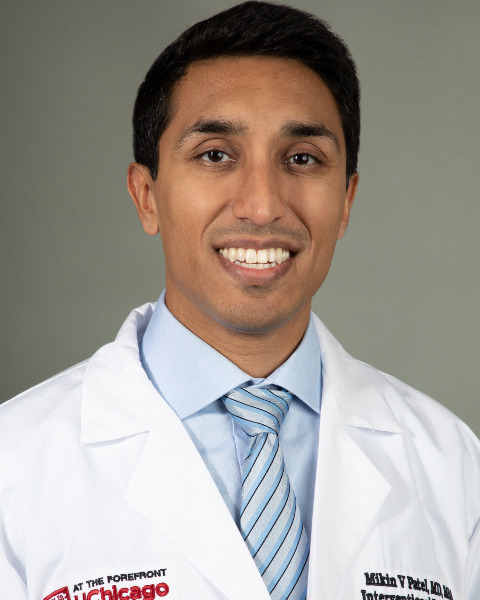SIR 2025
Venous Interventions
Traditional Poster
117 - Application of Histotripsy to Disrupt Chronic Deep Vein Thrombosis in Pre-Clinical Testing

Kevin Zhao, MS (he/him/his)
Student Researcher
Department of Radiology, University of Chicago, United States- ES
Erik Saucedo, BA
Student Researcher
Department of Radiology, University of Chicago, United States - AO
Allison M. Ostdiek, PhD
Director, Large Animal Clinical Services
Department of Surgery, University of Chicago, United States - GW
Geoffrey D. Wool, MD, PhD
Associate Professor of Pathology
Department of Pathology, University of Chicago, United States - OA
Osmanuddin S. Ahmed, MD
Associate Professor of Radiology
Radiology Section Interventional Radiology Chicago, United States 
Mikin V. Patel, MD
Assistant Professor of Radiology
Department of Radiology, University of Chicago, United States- JP
Jonathan D. Paul, MD
Associate Professor of Medicine
Department of Cardiology, University of Chicago, United States - KB
Kenneth B. Bader, PhD
Assistant Professor of Radiology
Department of Radiology, University of Chicago, United States
Poster Presenter(s)
Author/Co-author(s)
Chronic deep vein thrombosis (DVT) is a pervasive challenge to healthcare systems worldwide. Current treatment options for chronic DVT have limited efficacy, which motivates the development of new approaches. One potential option is histotripsy, an image-guided focused ultrasound therapy that ablates tissue noninvasively via bubble activity. The technology was cleared by the FDA for lesions in the liver. Pre-clinical studies indicate histotripsy can also treat acute DVT without evidence of embolization. Additional data is needed to determine the efficacy of histotripsy for advanced disease stages. The purposes of this study were to: 1) Develop a relevant model of chronic DVT and 2) Evaluate histotripsy-induced changes to the aged thrombus.
Materials and Methods:
Thrombi were formed via selective occlusion of the femoral vein in mixed-breed female pigs, as described previously {1}. After formation, a surgical glue (TISSEEL, Baxter Healthcare Corporation, Deerfield, IL) was used to stabilize thrombi within the vessel. The thrombi were tracked with ultrasound imaging over a 29.6 ± 2.7-day maturation period. After maturation, histotripsy was applied throughout the occluded vessel with a custom DVT histotripsy system {2}. Treated thrombi were assessed with ultrasound imaging (Clover 60 Vet, Wisonic, Shenzhen), contrast angiography (OEC-9800, GE Healthcare, Chicago, IL), and histological analysis.
Results:
Thrombus persisted throughout the maturation period for six of eight cases, occluding 66% of the vein on average (range 30% to 100%). Over this period, the thrombus appearance on ultrasound imaging shifted from isoechoic to hetero-echoic. Non-treated specimens consisted of thickened vessel wall with granulation tissue and inflammatory cell infiltration. Application of histotripsy to the thrombus resulted in successful bubble cloud generation for all cases (N = 3). The treatment duration ranged from 92 to 205 minutes depending on the thrombus extent (range 1.7 to 3.4 cm). Targeted regions were hypoechoic on ultrasound imaging indicative of successful ablation, resulting in an average 59% (range 33% to 80%) reduction in the thrombus burden. Fluoroscopic contrast had increased penetration within the occluded vessel relative to pre-treatment for all cases. Hemorrhage was noted in targeted tissue, with erythrocyte extravasation near neo-vasculature.
Conclusion:
Findings from this proof-of-concept study demonstrate histotripsy has the capacity to treat chronic DVT in a relevant animal model, which motivates further research.


.jpg)